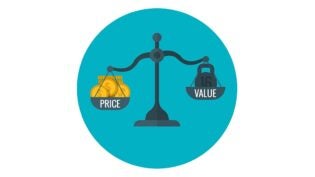
Sales issues
One person indicated that the prospect had said, “If I had that much money in my budget I’d spend it on [something other than what the speaker was offering].” That’s not a pricing issue; that’s a sales qualification issue. The speaker hadn’t gotten to the prospect’s priorities until after having quoted a price.
Another person stated that their largest customer has refused price increases for each of the three previous years and was refusing again this year. When I asked what options the customer was being offered, the speaker looked puzzled. The speaker was offering only one option for the service being provided. By offering multiple options she could have directed her customer to lower-priced alternatives which afforded less benefit than the customer was currently getting, forcing that customer to make some conscious decisions about what was important (valuable).
A third person indicated that a rogue salesperson wasn’t following the company’s pricing guidelines. That’s not a pricing issue, that’s a performance issue. Further exploration indicated that there were a lot of structural issues that made accountability a problem for all involved. So the first step should have been restructuring reporting relationships.
Life cycle issues
Yet another person had offerings that were in the maturity phase of the product life cycle, yet leadership was in denial about the limitations for the future of these offerings. These are product life cycle, resource allocation issues, not pricing issues.
Lessons
What can we learn from this experience? That most ‘pricing’ problems have little, if anything, to do with pricing. Many are sales issues. Many of these sales issues arise because of ill-defined organizational structures and compensation programs. Some from poor hiring practices, poor training and poor leadership.
Other ‘pricing’ issues stem from ill-defined markets/market segments, excessive focus on competitors’ activities or a lack of awareness of where the company’s offerings are in the product life cycle.
Even more ‘pricing’ issues result from the fact that companies are selling their products and services while customers are buying image, innovation and convenience.
These are only a few of the real issues that are attributed to pricing. My advice? The next time you feel that you have a pricing issue, ask yourself, “Will changing the price change the result?” In the vast majority of cases, the answer is, ‘No.’
This one question, answered honestly, will help you avoid suffering lower prices without solving the real problem.
This article was originally published by Pricing for Profit
1872 Views














